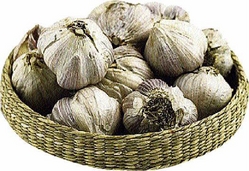Beating the yeast
Published: Tuesday | October 6, 2009

Mildew, moUld and mushrooms are plant forms called fungi. Yeasts are microscopic fungi and the commonest is a germ called candida albicans (formerly as monilia). It can be found living on the skin, in the digestive tract and the vagina of healthy individuals without causing any apparent problem.
Yeast, however, has the potential to become problematic when excessive numbers of this germ multiply in the body and create stress to the immune system. As the level of candida grows, immune stress increases.
Under unfavourable conditions - such as in diabetes or hormonal imbalance with the use of antibiotics and steroids, or when the immune system is weak for any reason - the organism may multiply and invade the membranes of the mouth, vagina, the skin, nails and deeper tissues or the bloodstream. This kind of infection is called candidiasis by conventional doctors and treated with antifungal drugs. This problem often becomes recurrent and chronic despite repeated treatments.
THE YEAST SYNDROME
In his book The Yeast Connection, Dr W.G. Crook described a condition in which the main features are fatigue, digestive system disturbance, chronic infections, allergies, skin problems, poor concentration, depression, irritability, hormonal imbalance, recurrent vaginal, prostate or urinary symptoms and cravings for sweets or other carbohydrates. This, he attributed, to an overgrowth of candida in the body and called it the yeast syndrome.
He explained that an overabundance of yeast multiplying in the intestines produces toxins that severely disturb immune system function. Because of insufficient research, conventional doctors question the existence of this syndrome. However, there is substantial practical evidence that it exists, often in association with the overuse and abuse of antibiotics. Many patients who have suffered for a long time with these symptoms get better when they follow the kind of programme outlined below.

ARE YOU AT RISK?
Yeast overgrowth is most common in individuals exposed to one or more or more of the items listed below:
A diet high in sugar and refined carbohydrates.
Diabetes.
Repeated courses of antibiotics (more than 20 weeks in your lifetime, or more than four times in one year would make candida overgrowth likely).
Birth-control tablets, or other hormone therapies.
Prednisone and other steroids.
Chronic and excessive emotional stress.
Any immune suppression condition, e.g. HIV infection
TREATING YEAST SYNDROME
DIET: The importance of the removal of sugar from the diet cannot be overemphasised. The yeast organism thrives and multiplies in an environment high in sugar. Many patients suffering from this problem have serious sugar and carbohydrate cravings. Failure to change the diet will result in failure to recover from the problem. If you have food allergies, those foods also need to be avoided during the recovery period.
A high-protein (mainly soy protein, fish, beans and peas), low-carbohydrate and low-fat programme is ideal. Even seemingly healthy carbohydrates like honey, sweet fruits and fruit juices are best avoided during the recover phase. They can be slowly reintroduced in small quantities later. Eat mostly protein and vegetables initially.
Dairy products, preservatives, chemical additives and yeast-containing foods should also be avoided. I recommend a programme of supplements called the Cellular Nutrition Programme to ensure optimal nutritional support.
PROBIOTICS: Healthy bacteria are beneficial in the prevention and treatment of yeast infections. These bacteria are called probiotics and their antifungal effect makes them particularly useful in treating the yeast syndrome. The most popular of these are the acidophilus and lactobacillus bacteria. They are available as tablets that combine the healthy bacteria with fibre to restore balance in the toxic colon.
ANTIFUNGAL HERBS
Garlic has a direct yeast-killing effect and should be used liberally in cooking. It may also be eaten raw or used as a vaginal insert. Aloe vera, goldenseal tea and oregano oil are other herbs with potent antifungal properties.
IMMUNE SUPPORT
A weak immune system is a major contributor to the yeast syndrome, and strengthening the immune system is a vital part of the programme. Supplementing generously with antioxidant vitamins A, C, E, selenium, the herbs rosemary and schizandra and the omega-3 fatty acids is strongly recommended. Getting adequate sleep, daily relaxation and exercise and healthy stress management is critical for the healing of a weak immune system. Avoidance of environmental pollutants, fumes and fragrances will also reduce stress on the immune system.
ANTIFUNGAL DRUGS
Prescription drugs like Nystatin, Sporanox and Diflucan may be very useful in severe cases but are not magic bullets. They will provide only temporary relief if the other issues are not addressed. The full programme must be followed for at least 12 weeks (and often much longer) to allow the body to recover from this debilitating condition.
You may email Dr Tony Vendryes at vendryes@mac.com or listen to 'An Ounce of Prevention' on Power 106FM on Fridays at 8 p.m. The programme streams live on the Internet.








